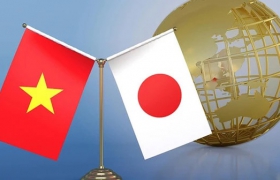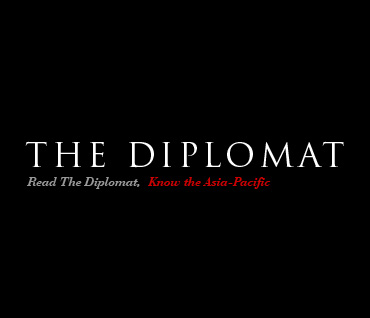- Luật
- Hỏi đáp
- Văn bản pháp luật
- Luật Giao Thông Đường Bộ
- Luật Hôn Nhân gia đình
- Luật Hành Chính,khiếu nại tố cáo
- Luật xây dựng
- Luật đất đai,bất động sản
- Luật lao động
- Luật kinh doanh đầu tư
- Luật thương mại
- Luật thuế
- Luật thi hành án
- Luật tố tụng dân sự
- Luật dân sự
- Luật thừa kế
- Luật hình sự
- Văn bản toà án Nghị quyết,án lệ
- Luật chứng khoán
- Video
- NGHIÊN CỨU PHÁP LUẬT
- ĐẦU TƯ CHỨNG KHOÁN
- BIẾN ĐỔI KHÍ HẬU
- Bình luận khoa học hình sự
- Dịch vụ pháp lý
- Tin tức và sự kiện
- Thư giãn

TIN TỨC
fanpage
Thống kê truy cập
- Online: 223
- Hôm nay: 198
- Tháng: 1621
- Tổng truy cập: 5245625
A Cold War Is Heating Up in the South China Sea
U.S.-China tensions over trade and the coronavirus epidemic are playing out dangerously on contested waters.

China’s naval ambition. Photographer: Anthony Wallace/AFP/Getty Images
I spent most of my seagoing career in the Pacific, and sailed many times through the humid waters of the South China Sea. It’s a big body of water, the size of the Caribbean and Gulf of Mexico combined. The sea bottom is full of oil and natural gas. Nearly 40% of the world’s international shipping passes through it.
China wrongly claims most of it as territorial seas. And as relations between the U.S. and China deteriorate into coronavirus finger-pointing and election-year posturing, the chances for a conflict in those waters are rising. In recent weeks, several U.S. warships — including a destroyer I commanded in the early 1990s, the Barry — have been confronted by the Chinese while conducting patrols. Why has this body of water become such a flashpoint, and what can be done to avoid an incident that could set off something bigger?
The historical underpinnings of China’s claims go back to the voyages of a 15th-century admiral, Zheng He. I wrote about him in my recent book, “Sailing True North,” and every time I met my Chinese counterparts at port visits and exercises, they would toast Zheng He. And with good reason. His explorations of the South China Sea, Indian Ocean and African and Arabian waters are legendary.
But they’re no legal basis for China to claim the entire South China Sea as its private lake. The argument has been firmly rejected by all other nations that surround that body of water, and by international courts.
To push back against Chinese claims, the U.S. Navy conducts so-called freedom of navigation patrols, designed to demonstrate that these are international waters — “high seas” in the parlance of international law.
These patrols can be tense. A couple of decades ago, when I was a commodore in command of a group of destroyers there, several of my ships conducted such missions. They consisted of sailing right through Chinese-claimed waters, which today contain artificial islands that the Chinese have built and militarized with missiles, airstrips, long-range guns and troops.
The Chinese will often overfly the destroyers — the jets sometimes just a few dozen feet in front of the bow — or send their own frigates and destroyers to challenge the U.S. warships. This can consist of hailing and making threats on bridge-to-bridge radios, shining precise fire-control radars to “illuminate” our ships, pointing missiles and guns in the general direction of U.S. forces and sailing far too close for safety. I counseled each of my destroyer captains to remain steady, avoid unnecessary confrontation and report back to me continuously, while I made reports to high authorities. It was always a white-knuckle experience, and my staff and I breathed a sigh of relief each time one of our ships finished the job.
During the recent patrols, the Barry and another destroyer, the Bunker Hill, were confronted by Chinese vessels, but they avoided an escalation. These missions will continue to inflame U.S.-Chinese relations, and are likely to be repeated more often as the year goes on. Much as U.S. ships are now finding the balance between confrontation and harassment from Iranian boats in the Gulf, they will need to do so in the South China Sea, where the stakes are higher.
The key for the U.S. is to gradually bend Chinese behavior without breaking the international relationship in a way that leads into a Cold War or armed conflict. The best way to do that is to bring more international allies into the freedom of navigation patrols (including North Atlantic Treaty Organization partners along with Australia and Japan); increase U.S. engagement with Taiwan, particularly in military-to-military cooperation; insist on a full-blown international investigation into the Wuhan outbreak of the coronavirus; and build stronger relations with other nations around the littoral of the South China Sea.
These confrontational measures should be accompanied by a basket of offers to gain China’s cooperation. These could include furthering trade and tariff agreements that provide access to U.S. markets beyond the “phase one” measures negotiated shortly before the pandemic; cooperating on Arctic trade routes and environmental norms there, something Beijing highly desires; conducting joint humanitarian operations; working to create “norms of behavior” between the two nations’ naval forces (much as Russia and the U.S. have hammered out); and exploring strategic and tactical arms-control agreements.
In essence, confront where we must, but cooperate where we can. Henry Kissinger warned several months ago that he sees the U.S. and China as being “in the foothills of a Cold War.” While I like his mountainous metaphor, we should also look to the sea to gauge how contentious this relationship is about to become. The forecast for the South China Sea is choppy weather indeed.
This column does not necessarily reflect the opinion of the editorial board or Bloomberg LP and its owners.
By Bloomberg.com
Các bài viết khác
- Từ sự kiện Tổng biên tập báo TIME Greta Thunberg là Nhân vật của năm 2019 đến báo cáo Biến đổi khí hậu Phúc trình của IPCC báo động đỏ cho nhân loại 82021 (15.01.2020)
- Giới đầu tư đón lõng cơn bán tháo trên thị trường bất động sản thương mại (28.05.2020)
- TPHCM xây dựng đô thị sáng tạo phía Đông từ việc nhập 3 quận (28.05.2020)
- Virus corona: Khủng hoảng kinh tế tồi tệ nhất kể từ đại suy thoái những năm 1930 (28.05.2020)
- Có phải Covid-19 đã giết chết toàn cầu hoá? (28.05.2020)


















































 Yahoo:
Yahoo: 